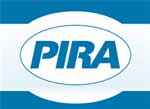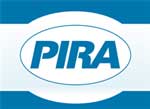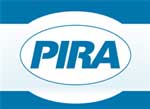 NYC-based PIRA Energy Group believes that pessimism about oil prices because of the Iran nuclear deal and economic concern about China and Europe are overdone. In the U.S., the stock excess modestly widens. In Japan, crude runs continue to rise while product stocks rise on lower demand. Specifically, PIRA’s analysis of the oil market fundamentals has revealed the following:
NYC-based PIRA Energy Group believes that pessimism about oil prices because of the Iran nuclear deal and economic concern about China and Europe are overdone. In the U.S., the stock excess modestly widens. In Japan, crude runs continue to rise while product stocks rise on lower demand. Specifically, PIRA’s analysis of the oil market fundamentals has revealed the following:
European Oil Market Forecast
Brent crude prices lost ground over the last few weeks with bearish news/sentiment leading to a selloff of non-commercial (financial) net length in oil. However, pessimism about oil prices because of the Iran nuclear deal and economic concern about China and Europe are overblown. Under the Iranian nuclear agreement, incremental Iranian oil will not likely hit the market until the second quarter 2016. The ECB and Chinese authorities have enough levers to pull to maintain economic growth momentum, and there has been enough stimulus injected into the financial system to provide uplift to global growth in second half 2015. Near-term crude oil fundamentals have been tightening with high refinery runs this summer and sequentially flat/declining U.S. crude production. With crude stock declines, prompt prices have strengthened as expected. Gasoline cracks are very strong and should remain healthy for the next few weeks at least but will continue to decline from their seasonal peak earlier this month. For middle distillates, with high refinery production in the Atlantic Basin and new distillate-oriented refineries ramping up in the Middle East, stocks will build. Diesel cracks will continue to erode over the next one to two months before seeing some seasonal recovery. Recent European refinery margin strength, the best in many years, will fall below last year’s levels by 4Q15.
U.S. Stock Excess Modestly Widens
This past week’s 2.8 million barrel inventory increase was 1.6 million barrels larger than the build last year for the same week, slightly widening the year-on-year inventory excess to almost 147 million barrels, or 13%. The product excess narrowed by 1.6 million barrels, but the crude excess widened by 3.2 million barrels despite this past week’s substantial crude inventory decline.
Japan Crude Runs Continue to Rise, Post-Turnarounds, While Product Stocks Rise on Lower Demand
Crude runs posted a second straight significant rise as maintenance continues to wind down and unplanned outages have restarted. Crude imports fell back and crude stocks posted a 3 MMBbls draw. Finished product stocks built by a slightly lesser amount, with gasoline, gasoil, and kero demands falling and their stock levels rising. The indicative refining margin remained good and little changed. Stronger gasoline cracks offset declines in the other major cracks.
Fracking Policy Monitor
EPA's study thus far did not find evidence that fracking “led to widespread, systemic impacts on drinking water resources in the United States.” A judge in Wyoming has temporarily put a halt to the BLM’s rules for fracking on federal lands. Texas and Oklahoma passed laws that would prohibit local bans on fracking. Also in Oklahoma, a state Supreme Court ruling makes it easier for it to sue for damages resulting from earthquakes.
U.S. LPG Prices Outperform
Mont Belvieu LPG prices stood strong for a second weak despite sharply lower broader energy market pricing. August propane futures at the market center were mostly unchanged on the weak despite sharply lower crude oil, thus propane’s ratio to WTI strengthened yet again, to near 36% of US benchmark oil. Augy butane at MTB fell a fraction of a percent to settle just under 58¢/gal. Prompt ethane prices gained 1% with stronger natural gas prices.
Ethanol Manufacturing Margins Declined for the Eight Straight Week
Most U.S. ethanol prices rose slightly the week ending July 10, supported by higher corn costs. Manufacturing margins in Chicago have decreased for eight straight weeks, however, as recent increases in raw material costs could not be fully passed through.
U.S. Production of Ethanol-Blended Gasoline Decreases
Ethanol-blended gasoline production declined sharply to a six-week low 8,837 MB/D the week ending July 10 as total gasoline output dropped and ethanol made up a smaller percentage of the total pool. Ethanol output fell slightly to 984 MB/D, down 3 MB/D from the previous week, but up 41 MB/D year-on-year.
Incremental Iranian Oil Now Expected in 2Q16
PIRA updates its view on the return of Iranian oil given the timeframe laid out in the nuclear accord finalized on July 14. We now believe incremental Iranian oil will hit the market in the second quarter of 2016, likely April or May. Once sanctions are lifted, we expect Iranian crude production to rise rapidly, from 3.0 MMB/D currently to full capacity of 3.5 MMB/D by the end of 2016. Our forecast for 2016 Iranian production is close to PIRA's June Reference Case, although first half production is slightly lower and second half production slightly higher.
Finalized Nuclear Deal Confirms Incremental Oil Not Likely Until 2016
The final nuclear deal reached by Iran and the P5+1 is in line with PIRA's expectations that incremental Iranian oil will not hit the market until sometime in 2016. The deal is to be adopted within 90 days, perhaps sooner, but implementation is not likely to occur in less than four to six months. Sanctions relief is dependent upon IAEA verification that Iran has implemented specific nuclear-related measures, which will take time to establish, verify, and report. There is also still potential for delays or slow movement during the process. For now, PIRA assumes Iranian oil exports will increase by 300 MB/D in the first half of 2016. Increases are expected to slow thereafter, and we expect Iran to reach full crude productive capacity of 3.5 MMB/D in 2017.
The information above is part of PIRA Energy Group's weekly Energy Market Recap - which alerts readers to PIRA’s current analysis of energy markets around the world as well as the key economic and political factors driving those markets.


 PIRA Energy Group, a leader in global energy market analysis, announced today the official launch of its new website and complimentary subscription service called PIRA PERSPECTIVES. PERSPECTIVES combines a high-level, weekly overview of PIRA’s energy intelligence with a monthly video series featuring its top analysts. This complimentary subscription is now available online at:
PIRA Energy Group, a leader in global energy market analysis, announced today the official launch of its new website and complimentary subscription service called PIRA PERSPECTIVES. PERSPECTIVES combines a high-level, weekly overview of PIRA’s energy intelligence with a monthly video series featuring its top analysts. This complimentary subscription is now available online at:  After almost eight decades of Pemex monopoly, the Mexican energy sector is entering a new era of foreign oil company participation. A decade of steady decline in domestic oil & gas production has incentivized the Mexican government to lift the regulations and allow international companies to start developing offshore projects in Mexican waters. The government is keen to attract private investors to its energy sector with the hope of kick starting its struggling economy.
After almost eight decades of Pemex monopoly, the Mexican energy sector is entering a new era of foreign oil company participation. A decade of steady decline in domestic oil & gas production has incentivized the Mexican government to lift the regulations and allow international companies to start developing offshore projects in Mexican waters. The government is keen to attract private investors to its energy sector with the hope of kick starting its struggling economy. NYC-based
NYC-based  After 10 years of diplomatic negotiation, the UN P5+1 countries (the US, the UK, France, China, Russia and Germany) at last reached an agreement to unwind economic sanctions on Iran in return for significant international control and surveillance over its nuclear activities. The long-awaited deal will revive foreign investment in Iran, as Western IOCs renew pre-sanction projects. Brent dropped $1.15 to $56.70/bbl on the back of the announcement, with markets fearing a worsening of the global supply glut.
After 10 years of diplomatic negotiation, the UN P5+1 countries (the US, the UK, France, China, Russia and Germany) at last reached an agreement to unwind economic sanctions on Iran in return for significant international control and surveillance over its nuclear activities. The long-awaited deal will revive foreign investment in Iran, as Western IOCs renew pre-sanction projects. Brent dropped $1.15 to $56.70/bbl on the back of the announcement, with markets fearing a worsening of the global supply glut. NYC-based
NYC-based  NYC-based
NYC-based  The subsea sector is highly consolidated with just five players servicing the $12billion annual requirements of the global E&P community. The two largest, FMC and OneSubsea, account for approximately two-thirds of the market but despite this, have shown no signs of resting on their laurels, forging strategic partnerships to reshape and redefine the commercial landscape. This has become increasingly critical as projects have grown in scale and complexity.
The subsea sector is highly consolidated with just five players servicing the $12billion annual requirements of the global E&P community. The two largest, FMC and OneSubsea, account for approximately two-thirds of the market but despite this, have shown no signs of resting on their laurels, forging strategic partnerships to reshape and redefine the commercial landscape. This has become increasingly critical as projects have grown in scale and complexity. NYC-based
NYC-based  Today’s oil and gas environment has been impacted by a myriad of issues including restrained capital spending, curtailed investment and employment cuts for struggling companies across the supply chain. Recovery from current market conditions is expected to be slow, with oil prices likely not to return to pre-crash levels in the near term. However, such conditions are likely to prove beneficial for those private equity firms and strategic investors prepared to take a long-term view of the current downturn.
Today’s oil and gas environment has been impacted by a myriad of issues including restrained capital spending, curtailed investment and employment cuts for struggling companies across the supply chain. Recovery from current market conditions is expected to be slow, with oil prices likely not to return to pre-crash levels in the near term. However, such conditions are likely to prove beneficial for those private equity firms and strategic investors prepared to take a long-term view of the current downturn. China’s stock markets have been suffering considerable volatility, sending the central government scrambling in an attempt to pick up the pieces to support the crashing market. Although Chinese economic growth slowed during the past year and local companies’ profits proved unsubstantial, investment in Chinese stocks remained high, creating a bubble which popped on June 12 with the Shanghai index losing a third of its value. Additional signs of market weakness have spread throughout the Chinese manufacturing industry as sector jobs are cut at a rate unobserved since February 2009. Likewise, the effects of slower than anticipated Chinese growth are already being felt by the energy industry, as China remains the world’s largest energy consumer.
China’s stock markets have been suffering considerable volatility, sending the central government scrambling in an attempt to pick up the pieces to support the crashing market. Although Chinese economic growth slowed during the past year and local companies’ profits proved unsubstantial, investment in Chinese stocks remained high, creating a bubble which popped on June 12 with the Shanghai index losing a third of its value. Additional signs of market weakness have spread throughout the Chinese manufacturing industry as sector jobs are cut at a rate unobserved since February 2009. Likewise, the effects of slower than anticipated Chinese growth are already being felt by the energy industry, as China remains the world’s largest energy consumer. Global upstream oil and gas deal activity, including capital markets and Mergers and Acquisitions (M&A), totaled $19.3 billion from 125 transactions in June 2015, marking a $4.3 billion decrease in value from the $23.6 billion across 119 deals posted in May 2015, says research and consulting firm
Global upstream oil and gas deal activity, including capital markets and Mergers and Acquisitions (M&A), totaled $19.3 billion from 125 transactions in June 2015, marking a $4.3 billion decrease in value from the $23.6 billion across 119 deals posted in May 2015, says research and consulting firm  As strained negotiations between the Greek government and European financial ministers enter the end-game, the impact on energy markets remains uncertain. Setting aside both the deeply troubling social impact for Greek citizens and other major forces – from Chinese equities to an Iranian nuclear deal – the threat of Greece leaving the Euro is already dampening crude prices. The concern for oil markets centers around two factors: the consequences for economic stability and growth in Europe, and strengthening of the US dollar.
As strained negotiations between the Greek government and European financial ministers enter the end-game, the impact on energy markets remains uncertain. Setting aside both the deeply troubling social impact for Greek citizens and other major forces – from Chinese equities to an Iranian nuclear deal – the threat of Greece leaving the Euro is already dampening crude prices. The concern for oil markets centers around two factors: the consequences for economic stability and growth in Europe, and strengthening of the US dollar. NYC-based
NYC-based  Adjusted 1st Half 2015 revenues increased 13.1% to €759 million at current rates (-1.7% at constant rates), which demonstrates good operational resilience in a very challenging market.
Adjusted 1st Half 2015 revenues increased 13.1% to €759 million at current rates (-1.7% at constant rates), which demonstrates good operational resilience in a very challenging market. NYC-based
NYC-based  NYC-based
NYC-based